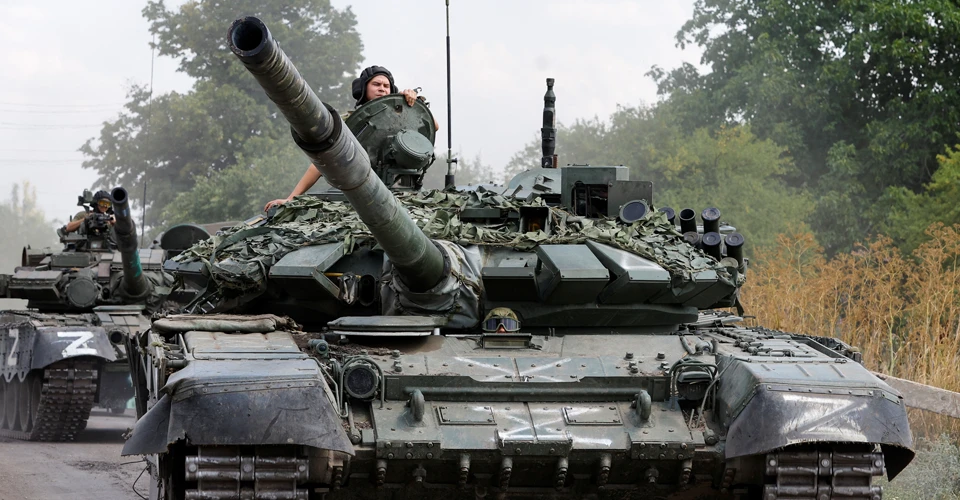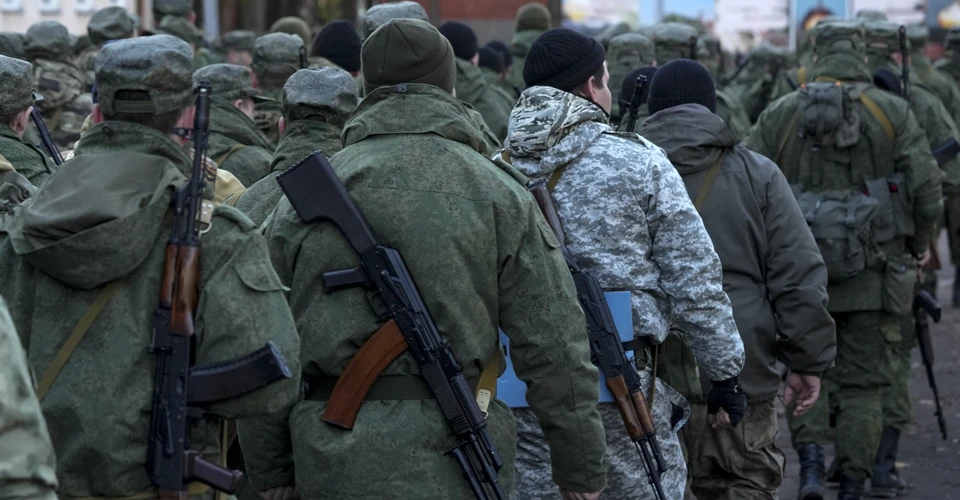
Russia prepares to build up its occupation troops in Ukraine. What is behind this decision?
Oleksandr Kovalenko, Ukrainian military and political observer of the Information Resistance group, journalist and blogger, explains why Russia increases the number of its troops in Ukraine
He writes about it on Obozrevatel.
In an interview with The Guardian, the Commander-in-Chief of the Ukrainian Armed Forces, Oleksandr Syrskyi, said that by the end of 2024, Russia intends to increase its grouping of troops to 690,000. For many, this statement came as a shock and somewhat stimulated panic. But how should we perceive the threat of such an increase in Russian military operations? Let's take a look.
Before assessing the threat, it is necessary to analyze how the composition of the Russian occupation grouping in Ukraine has changed over the past two and a half years.
What was the composition of Russian military grouping at the time of the full-scale invasion, and what is it now?
I have repeatedly conducted such an analysis and emphasized that the effectiveness of the occupation forces at the beginning of the full-scale invasion was much higher than it is now.
In a recent research article, I drew attention to the fact that while in 2022 the Russian forces managed to capture 63.9 thousand km², in 2023 this figure was 683 km², and as of the first half of 2024 - 752 km². But in that article, I drew a correlation between the occupied territories and Russia's losses, and now I want to tell how the composition of the occupation forces changed in numbers.
“For example, in 2022, the Russian Armed Forces invaded Ukraine with a grouping of 180,000 personnel and by the end of the year they had seized 63.9 thousand square kilometers. But in December 2023, there were already 450,000 occupants with 683 km² occupied. In the first half of 2024, the number of Russia's troops amounted to 530,000 people with 752 km² occupied,” military and political observer explains.
That is, the increase in the number of occupation forces has not affected the process of seizing the territories of Ukraine. Then why continue to increase it, if in general the qualitative component is an indicator of the professionalism of the troops and their staffing, particularly with equipment?
Quality not quantity
In 2022, the Russian occupation forces were able to capture tens of thousands of square kilometers of Ukrainian territory having 180,000 of manpower due to the fact that they were truly professional troops with many years of service and some, but still some, experience in combat. In addition, almost every Russian unit had full, almost one hundred percent staffing with equipment, and for several months there was no acute shortage of ammunition, equipment, fire support, or people with experience.

Then the situation began to change gradually, but invariably, for the Russian army in a negative direction. First of all, in terms of supplying troops with equipment in accordance with the staffing levels, and secondly, with professional junior officers and privates.
Therefore, when the number of occupation troops doubled, and then even tripled, the problem did not disappear, because as the grouping was saturated with human resources, the need to provide it with regular equipment increased, and the Russian military-industrial complex did not have this capability.
“Basically, the Russian command was driving itself into a dead end, because the more personnel the army had, the more equipment they needed, and the greater the shortage of equipment, the more they tried to compensate for it with human resources. It was a vicious circle from which the Russian command could not and will not get out,” Kovalenko notes.
In 2023, I wrote that the Russian army is gradually turning into a continuous marching battalion, and today's processes only confirm this. The Russian military-industrial complex is unable to provide the army with equipment. Moreover, the possibilities of supplying it are being exhausted, as the stocks of Soviet equipment in warehouses and storage centers are being depleted. As I mentioned earlier, 2024 is a critical year for the Russian Armed Forces in terms of compensating for losses in the category of main battle tanks and armored combat vehicles. And what will the Russian command do when there is a critical shortage of them?
That's right. They will compensate for them in the old fashioned way with human resources, which, as we can see, does not work.
But is the Russian command so blind that it does not see that increasing the contingent without its quality support will not lead to a positive effect? They do see it. But they need a lot of cannon fodder in the combat zone not for success in the war, but for completely different purposes.
Why does Russia need so much cannon fodder?
The Russian command will have no effect on the Russian military-industrial complex. They cannot produce new (exactly new!) tanks at 300 units per month. Nor can they produce thousands of new armored personnel carriers. The situation with artillery is even more complicated.
“And a large number of human resources in the combat zone is needed not so much for an offensive on Kyiv 2.0 or for a breakthrough to Odesa - the Russian command needs all this mass to at least retain what will be captured by the end of 2024. In other words, the Russian command sees 690,000 as a human shield that, in a single suicidal plan, will have to deter counterattacks by the Ukrainian Defense Forces in 2025 while Moscow, activating all its levers, tools, and puppets in different countries, seeks to force Ukraine to peace. Of course, on Russia's terms,” political observer Kovalenko believes.
That is, 690,000 is not about the threat of a large-scale, epic offensive, but about hysteria and playing all-in with tens or even hundreds of thousands of lives.
Can Russia mobilize this number? Yes. It has every opportunity to increase its grouping to 690,000 by the end of 2024. But to do so, it will in any case need to announce partial or open general mobilization.

I was expecting such an announcement as early as June, given the presidential “elections” in Russia and the losses in the combat zone, but the military and political leadership of the Russian Federation is in no hurry to take such measures because it fears a domestic reaction. Still, regional sentiments influence the adoption of such decisions in Russia, but in any case, they must carry out this mobilization - there is no way out. Although it will not be as large-scale as in the fall of 2022, mobilization of 60,000 people per month may well fulfill the plan by the end of the year.
Therefore, yes, the task can be realized, but it will not have any dramatic impact on the course of hostilities and the creation of critical conditions. However, this does not mean that in 2025, the Russian army will not face problems not with compensating for the loss of equipment, but with compensating for the loss of human resources.
Conclusions
The Russian command realizes that in the near future it will face not just a shortage of equipment for its army, but a real crisis. They do not see any other way to resolve it than to replace equipment with human resources. Therefore, the occupation contingent of the Russian Armed Forces in Ukraine will systematically increase, although this process has its limits.
“Russia's military and political leadership is driving itself into a dead end with such decisions, with the only hope that it will be able to hold out in the hope of forcing Ukraine to peace, which will allow Russia to restore its resources after getting a break. But if that doesn't happen, Russia will lose everything and be completely and utterly drained of blood. That is why 690,000 troops in Ukraine is not about a threat, but about desperation and bloody all-in,” Oleksandr Kovalenko concludes.
- News











































